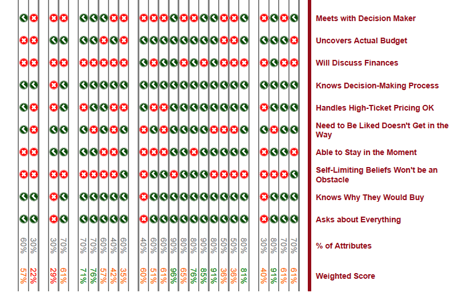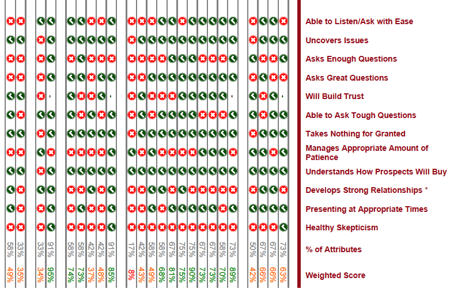There are a number of reasons why a person might choose to pursue a career in sales. For one thing, sales jobs tend to be more plentiful and, therefore, easier to find and get. Additionally, even though some of us are more naturally gifted at selling than others, sales is a type of career in which virtually anyone can learn and thrive.
But that doesn’t mean a career or job in a sales environment isn’t without its drawbacks. Shopping online is increasingly the norm for many consumers, which effectively removes salespeople from the equation. And considering that salespeople are competing with the wealth of information — e.g., product reviews, YouTube videos, demonstrations, etc. — that is available online, there’s immense pressure on salespeople to be a valuable resource for customers. As a result, a career in sales can result in a significant amount of stress that makes it difficult to achieve a health work-life balance.
As it happens, there are actually a number of ways to ensure that your sales team is able to achieve a great work-life balance while hitting or even exceeding their sales goals.

A unified tool for customer relationship management
It’s not easy to be a salesperson, especially for a larger company. For customers, the best sales experience happens when the salesperson has some basis of knowledge for what the customer needs or wants. But this is often hard to achieve with a sales team of hundreds and a customer base of thousands or tens of thousands of people. And when the onus of offering this tailored experience is on the sales team, it can result in immense stress that will inevitably affect their personal lives. So how do you alleviate this problem?
Customer relationship management (CRM) software is a great solution to this conundrum. Typically, customer relationship management software serves as a centralized database in which to store an in-depth profile for each individual customer, both existing and prospective. With a great CRM program, sales team members have easy access to customer profiles as well as each customer’s transaction and communication histories, allowing sales members to better serve customers’ needs. Additionally, CRM software eliminates a major stressor in a sales environments.
There are lots of customer relationship management solutions available to meet a wide variety of company and sales personnel needs. And many CRM programs available offer a number of complementary features that enhance sales interactions.
No mention of customer relationship management software is complete without Salesforce, which continues to be one of the most popular programs in its category. With a solid TrustRadius score of 8.0 out of 10, Salesforce tends to be particularly well-suited for sales teams due to its combination of client data with a suite of workflow, communication, and sales opportunity management.
GreenRope is a program that has garnered immense favor among sales teams from a wide variety of different industries. Consisting of a combination of robust CRM and marketing automation features, GreenRope has an impressive TrustRadius score of 9.2 out of 10 and is frequently lauded for its low cost, great support team, and an increasingly user-friendly interface.
More robust talent management
Your sales team is important because they facilitate and pursue transactions. For all intents and purposes, the sales team of your company is what ensures your company’s longevity and success. Considering that your sales team is so important, it’s a good idea to make sure you’re utilizing each team member’s strengths in the best way possible.
Talent management systems are programs that ensure your company is utilizing your personnel in the most effective ways possible. By consolidating data and protocols pertaining to recruitment, acquisition, onboarding, training, development, performance management, and compensation, you can compile an in-depth profile for each member of your team, allowing you to best allocate each team member’s strengths while addressing weaknesses.
In turn, your team members become more successful and experience less stress on the job — stress that will inevitably bleed into their personal lives — as the TMS helps you tailor their job duties to their unique talents.
UltiPro consistently ranks as one of the best talent management software options available. With an impressive TrustRadius score of 8.4 out of 10, UltiPro aggregates virtually every type of personnel data you can imagine, including demographics, employment history, benefits information, workflow charting, payroll history, attendance records, performance reviews and improvement plans, and the list goes on and on. Plus, the program has robust reporting options, allowing you to use the data for actionable strategies and planning.
Workaday HCM (Human Capital Management) is another great option for managing your sales team as effectively as possible so as to offer the best work-life balance. Though it doesn’t offer quite as many data-tracking and reporting options as UltiPro, Workaday HCM has a solid 8.0 out of 10 and is highly recommended by users for its scalability and flexibility.
Dane O’Leary is a writer, tech journalist and regular contributor to TrustRadius where he shares his knowledge on the latest trends in B2B news and technologies. He has written editorials, articles, and blog posts for some of the most popular publications on the web, including Android Authority, Phone Arena, NeilPatel.com, and Millennial Magazine while also publishing regularly on his own website






